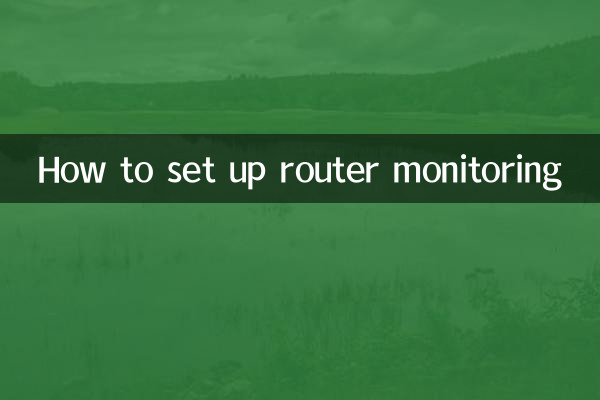How to set up router monitoring
In today's digital era, routers are the core equipment of home and enterprise networks, and their monitoring settings are particularly important. By monitoring the router, users can understand network status, device connections, and potential security threats in real time. This article will introduce the setting method of router monitoring in detail, and attach the hot topics and hot content in the past 10 days to help readers better master the relevant skills.
1. Router monitoring setup steps

1.Log in to the router management interface: First, make sure your device is connected to the router. Open a browser and enter your router's IP address (usually 192.168.1.1 or 192.168.0.1), followed by your username and password (the default information can usually be found on the back of the router).
2.Enable monitoring: In the management interface, find the "Monitoring" or "Traffic Monitoring" option and enable related functions. Router interfaces of different brands may have slightly different interfaces, but the basic logic is similar.
3.Set monitoring parameters: Set monitoring parameters as needed, such as traffic thresholds, device connection reminders, etc. Some advanced routers also support custom monitoring rules.
4.Save and apply settings: After completing the settings, click the "Save" or "Apply" button to ensure that the configuration takes effect.
2. Hot topics and content in the past 10 days
The following are the Internet and technology-related topics that have been hotly discussed on the Internet in the past 10 days:
| date | hot topics | heat index |
|---|---|---|
| 2023-10-01 | Wi-Fi 7 technology officially commercialized | ★★★★★ |
| 2023-10-03 | A guide to protecting your home network | ★★★★☆ |
| 2023-10-05 | Router vulnerability leads to data leakage | ★★★★★ |
| 2023-10-07 | Smart home device connection issues | ★★★☆☆ |
| 2023-10-09 | 5G network coverage expands | ★★★★☆ |
3. Common problems and solutions for router monitoring
1.Unable to log in to the management interface: Check if the IP address is correct, or try resetting the router.
2.Monitoring data is inaccurate: Make sure the router firmware is the latest version, or restart the router and reconfigure it.
3.Device connection abnormality: Check whether there is any unknown device accessing, and enable MAC address filtering if necessary.
4. Advanced functions of router monitoring
1.Traffic speed limit: Through the monitoring function, you can set a traffic limit for specific devices to avoid network congestion.
2.security alert: Some routers support a security alert function that automatically notifies users when abnormal traffic or attacks are detected.
3.remote monitoring: Realize remote monitoring and management of routers through mobile APP or cloud services.
5. Summary
Router monitoring is an important means to ensure network security and efficient operation. Through the setting steps and techniques introduced in this article, users can easily master the method of router monitoring. At the same time, paying attention to recent hot topics will help you understand the latest network technology dynamics and security trends. Hope this article helps you!
If you have any questions or need further information, please leave a message in the comment area for discussion.

check the details

check the details